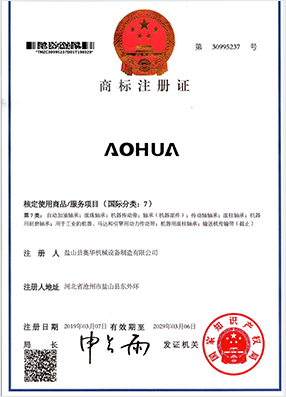 Afrikaans
Afrikaans  Albanian
Albanian  Amharic
Amharic  Arabic
Arabic  Armenian
Armenian  Azerbaijani
Azerbaijani  Basque
Basque  Belarusian
Belarusian  Bengali
Bengali  Bosnian
Bosnian  Bulgarian
Bulgarian  Catalan
Catalan  Cebuano
Cebuano  Corsican
Corsican  Croatian
Croatian  Czech
Czech  Danish
Danish  Dutch
Dutch  English
English  Esperanto
Esperanto  Estonian
Estonian  Finnish
Finnish  French
French  Frisian
Frisian  Galician
Galician  Georgian
Georgian  German
German  Greek
Greek  Gujarati
Gujarati  Haitian Creole
Haitian Creole  hausa
hausa  hawaiian
hawaiian  Hebrew
Hebrew  Hindi
Hindi  Miao
Miao  Hungarian
Hungarian  Icelandic
Icelandic  igbo
igbo  Indonesian
Indonesian  irish
irish  Italian
Italian  Japanese
Japanese  Javanese
Javanese  Kannada
Kannada  kazakh
kazakh  Khmer
Khmer  Rwandese
Rwandese  Korean
Korean  Kurdish
Kurdish  Kyrgyz
Kyrgyz  Lao
Lao  Latin
Latin  Latvian
Latvian  Lithuanian
Lithuanian  Luxembourgish
Luxembourgish  Macedonian
Macedonian  Malgashi
Malgashi  Malay
Malay  Malayalam
Malayalam  Maltese
Maltese  Maori
Maori  Marathi
Marathi  Mongolian
Mongolian  Myanmar
Myanmar  Nepali
Nepali  Norwegian
Norwegian  Norwegian
Norwegian  Occitan
Occitan  Pashto
Pashto  Persian
Persian  Polish
Polish  Portuguese
Portuguese  Punjabi
Punjabi  Romanian
Romanian  Russian
Russian  Samoan
Samoan  Scottish Gaelic
Scottish Gaelic  Serbian
Serbian  Sesotho
Sesotho  Shona
Shona  Sindhi
Sindhi  Sinhala
Sinhala  Slovak
Slovak  Slovenian
Slovenian  Somali
Somali  Spanish
Spanish  Sundanese
Sundanese  Swahili
Swahili  Swedish
Swedish  Tagalog
Tagalog  Tajik
Tajik  Tamil
Tamil  Tatar
Tatar  Telugu
Telugu  Thai
Thai  Turkish
Turkish  Turkmen
Turkmen  Ukrainian
Ukrainian  Urdu
Urdu  Uighur
Uighur  Uzbek
Uzbek  Vietnamese
Vietnamese  Welsh
Welsh  Bantu
Bantu  Yiddish
Yiddish  Yoruba
Yoruba  Zulu
Zulu Effective Design Strategies for Conveying Systems Utilizing Idlers to Enhance Performance and Efficiency
Understanding Idlers for Conveyor Belts Essential Components in Material Handling
Conveyor belts are integral to various industries, facilitating the efficient movement of materials ranging from raw goods to finished products. A crucial component of these conveyor systems is the idler, which plays a vital role in ensuring smooth operation and longevity of the conveyor belt.
What are Idlers?
Idlers are the non-powered rollers that support the weight of the conveyor belt and the material being transported. Located at various points along the length of the conveyor, idlers are typically installed at a fixed or adjustable height to accommodate differing load conditions. They are available in various designs and materials, tailored to specific industrial applications, and they significantly contribute to improving the efficiency and performance of a conveyor system.
Types of Idlers
There are several types of idlers, each designed for specific purposes. The most common types include
1. Carrier Idlers These are the primary idlers that support the conveyor belt and carry the materials. They are typically found in the carrying section of the conveyor and are crucial for load support.
2. Return Idlers Positioned at the return side of the conveyor, these idlers support the belt as it returns to the start of the system. They help in maintaining the belt's alignment and ensure smooth operation.
3. Impact Idlers Located at points where material is loaded onto the conveyor, impact idlers are designed to absorb the shock and impact of dropped materials, protecting the belt and other components from damage.
4. Training Idlers These are specialized idlers that help to align the conveyor belt, preventing it from deviating from its intended path. Proper belt alignment is crucial for reducing wear and tear on the belt and idlers.
Material and Design Considerations
idler for conveyor belt

Idlers can be made from a variety of materials, including steel, plastic, and rubber. The choice of material often depends on the application, load capacity, and environmental conditions. For heavily loaded systems or where heavy impact is expected, steel idlers are preferred for their durability and strength. On the other hand, lightweight applications may see the use of plastic or rubber idlers, which can offer corrosion resistance and reduced noise.
The design of idlers also varies, with options like tapered and cylindrical shapes available. The design influences the performance of the conveyor, including the ease of maintenance and resistance to wear.
Importance of Idlers in Conveyor Systems
The role of idlers in conveyor systems cannot be overstated. They help in
- Supporting the Conveyor Belt By providing a stable surface for the belt to move on, idlers minimize sagging, which reduces the risk of belt damage.
- Reducing Friction High-quality idlers are designed to minimize rolling resistance, thereby lowering energy consumption and improving the overall efficiency of the conveyor system.
- Preventing Material Spill Properly installed idlers ensure that the conveyor belt remains aligned, preventing materials from spilling over the edges and reducing waste.
- Enhancing Longevity Regular maintenance and the use of quality idlers prolong the lifespan of the conveyor belt and system components, resulting in lower operational costs.
Conclusion
In summary, idlers are an essential element of conveyor belt systems. Their design, material, and configuration significantly influence the efficiency, safety, and overall performance of conveyor operations. By understanding the different types of idlers and their functions, industries can optimize their material handling processes, reduce downtime, and enhance productivity. Investing in high-quality idlers can lead to long-term benefits, making them a critical component in the successful operation of conveyor systems.
-
Revolutionizing Conveyor Reliability with Advanced Rubber Lagging PulleysNewsJul.22,2025
-
Powering Precision and Durability with Expert Manufacturers of Conveyor ComponentsNewsJul.22,2025
-
Optimizing Conveyor Systems with Advanced Conveyor AccessoriesNewsJul.22,2025
-
Maximize Conveyor Efficiency with Quality Conveyor Idler PulleysNewsJul.22,2025
-
Future-Proof Your Conveyor System with High-Performance Polyurethane RollerNewsJul.22,2025
-
Driving Efficiency Forward with Quality Idlers and RollersNewsJul.22,2025





























